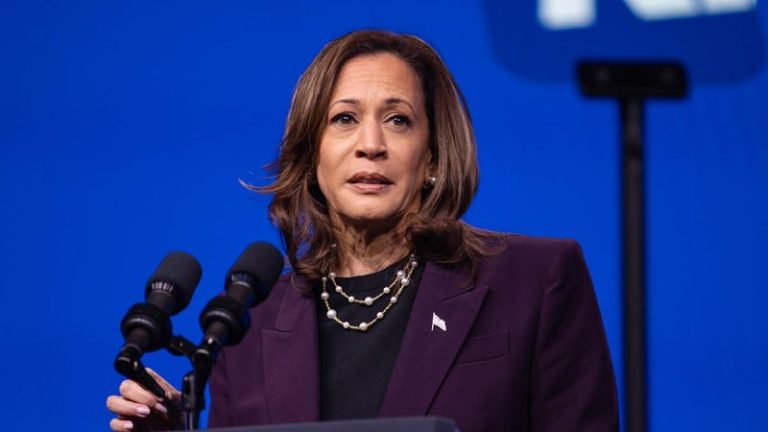Former special counsel Jack Smith used a closed-door deposition with House Republicans last month to defend his investigations into Donald Trump’s alleged effort to subvert the 2020 presidential election and his alleged retention of certain classified documents, using the hours-long testimony to forcefully dispute the notion that his team had acted politically, and citing what he described as ample evidence to support the indictments that had been levied against Trump.
‘I made my decisions in the investigation without regard to President Trump’s political association, activities, beliefs, or candidacy in the 2024 presidential election,’ Smith told members of the House Judiciary Committee in the Dec. 17 interview.
The interview was Smith’s first time appearing before Congress since he left his role as special counsel in 2024. And while much of the information was not new, the exchange was punctuated by sharp exchanges with Republicans on the panel, both on the strength of the case, and on his own actions taken during the course of the probe — most recently, on the tolling records his team sought from a handful of Republican lawmakers over the course of the investigation. Republicans have assailed the records as being at odds with the speech or debate clause of the Constitution.
‘I made my decisions in the investigation without regard to President Trump’s political association, activities, beliefs, or candidacy in the 2024 presidential election,’ Smith told the committee. ‘We took actions based on what the facts, and the law required — the very lesson I learned early in my career as a prosecutor.’
Republicans on the panel ultimately opted to publish the redacted transcript on New Year’s Eve, a decision that may have helped dull the impact of any news the 255-page document may have generated amid the broader hustle and bustle of the holiday season.
Here are some of the biggest moments and notable exchanges from the eight-hour hearing.
New political tensions
Smith was tapped by former Attorney General Merrick Garland in 2022 to investigate the alleged effort by Trump and his allies to overturn the results of the 2020 election, as well as Trump’s keeping of allegedly classified documents at his Mar-a-Lago residence in Palm Beach after leaving office in 2020. Smith had brought charges against Trump in both cases.
The charges were dropped after Trump’s election, in keeping with a longstanding Justice Department policy that discourages investigating sitting presidents for federal criminal charges, and Smith resigned from his role shortly after.
If nothing else, Smith’s Dec. 17 testimony underscored just how much has changed since Trump’s reelection in 2024.
Trump, for his part, has used his first year back in office to follow through on his promises to go after his perceived political ‘enemies,’ including by revoking security clearances of many individuals, including employees of a D.C.-based law firm that represents Smith, and taking other punitive measures to punish or fire FBI agents involved in the Jan. 6, 2021, investigation.
During his testimony last month, Smith fiercely disputed the notion that Trump’s remarks about the 2020 election results would be protected by the First Amendment.
‘Absololutely not,’ he said in response to a lawyer for Republicans on the House Judiciary Committee.
The lawyer then ticked through a ‘long list of disputed elections’ in U.S. history and former presidents who have spoken out about ‘what they believed to be fraud,’ or other issues regarding election integrity. ‘I think you would agree that those types of statements are sort of at the core of the First Amendment rights of a presidential candidate, right?’
‘There is no historical analog for what President Trump did in this case,’ Smith said immediately.
‘Powerful’ evidence
Smith told members that the special counsel ultimately gathered evidence against Trump that was, in his view, sufficient to secure a conviction.
‘He made false statements to state legislatures, to his supporters in all sorts of contexts and was aware in the days leading up to Jan. 6th that his supporters were angry when he invited them, and then he directed them to the Capitol,’ Smith said of Trump’ actions in the run-up to Jan. 6.
‘Now, once they were at the Capitol and once the attack on the Capitol happened, he refused to stop it. He instead issued a tweet that, without question in my mind, endangered the life of his own vice president,’ Smith added. ‘And when the violence was going on, he had to be pushed repeatedly by his staff members to do anything to quell it.’
Other possible co-conspirators had not been charged, as Smith noted at one point during the interview.
But Smith said in the testimony that his team had developed ‘proof beyond a reasonable doubt’ that Trump ‘engaged in a criminal scheme to overturn the results of the 2020 election and to prevent the lawful transfer of power.’
They’d also developed what he described as ‘powerful evidence’ that Trump willfully retained highly classified documents after leaving office in January 2021 at his private Mar-a-Lago residence, and was obstructing the government’s efforts to recover the records.
Smith’s team had not determined how to proceed for possible ‘co-conspirators’
Smith said that, when the special counsel wound down in the wake of the 2024 elections, his team had not determined whether to charge the key Trump allies who may or may not have acted as co-conspirators, including Rudy Giuliani, Sidney Powell and John Eastman.
‘As we stated in the final report, we analyzed the evidence against different co-conspirators,’ Smith said. Smith reiterated his allegation that Trump was ‘the most culpable’ and ‘most responsible’ person for the alleged attempts to subvert the 2020 election results.
He said the special counsel had ‘determined that we did have evidence to charge people at a certain point in time.’
But at the time the investigation was wound down, they had not made ‘final determinations about that at the time that President Trump won reelection, meaning that our office was going to be closed down.’
He lamented the ousting of DOJ, FBI officials
Smith used his opening remarks to lament the ousting of FBI agents and Justice Department officials involved in the Jan. 6 investigations.
‘I am both saddened and angered that President Trump has sought revenge against career prosecutors, FBI agents, and support staff simply for doing their jobs and for having worked on those cases,’ Smith said.
His remarks came after the FBI in recent months ousted a handful of personnel involved in the Jan. 6 investigations, an effort individuals familiar with the action described to Fox News at the time as an act of ‘retaliation.’
Thousands of FBI personnel in February were forced to fill out a sprawling questionnaire asking employees detailed questions about any role they may have played in the investigation into the Jan. 6, 2021, U.S. Capitol riots — ranging from whether they had testified in any criminal trials to when they last participated in investigation-related activity.
Smith’s team didn’t tell the courts that subpoenaed phone records belonged to lawmakers
Smith was grilled during the deposition about the highly scrutinized subpoenas his team issued to phone companies for data belonging to House and Senate lawmakers as part of his investigation, saying they aligned with the Justice Department’s policy at the time.
Smith said the Public Integrity Section signed off on the subpoenas, a point corroborated by records previously released by Grassley’s office.
Those records also showed that the Public Integrity Section told prosecutors to be wary of concerns lawmakers could raise about the Constitution’s speech or debate clause, which gives Congress members added protections.
The subpoenas to the phone companies were accompanied by gag orders blocking the lawmakers from learning about the existence of the subpoenas for at least one year. Smith said the D.C. federal court, which authorized the gag orders, would not have been aware that they applied to Congress members.’I don’t think we identified that, because I don’t think that was Department policy at the time,’ Smith said.
Asked during the deposition about who should be held accountable for lawmakers who felt that the seizure of a narrow set of their phone data was a constitutional violation, Smith said Trump should be held accountable.
‘These records are people, in the case of the Senators, Donald Trump directed his co-conspirators to call these people to further delay the proceedings,’ Smith said.
‘He chose to do that. If Donald Trump had chosen to call a number of Democratic Senators, we would have gotten toll records for Democratic Senators. So responsibility for why these records, why we collected them, that’s — that lies with Donald Trump,’ he said.
This post appeared first on FOX NEWS










